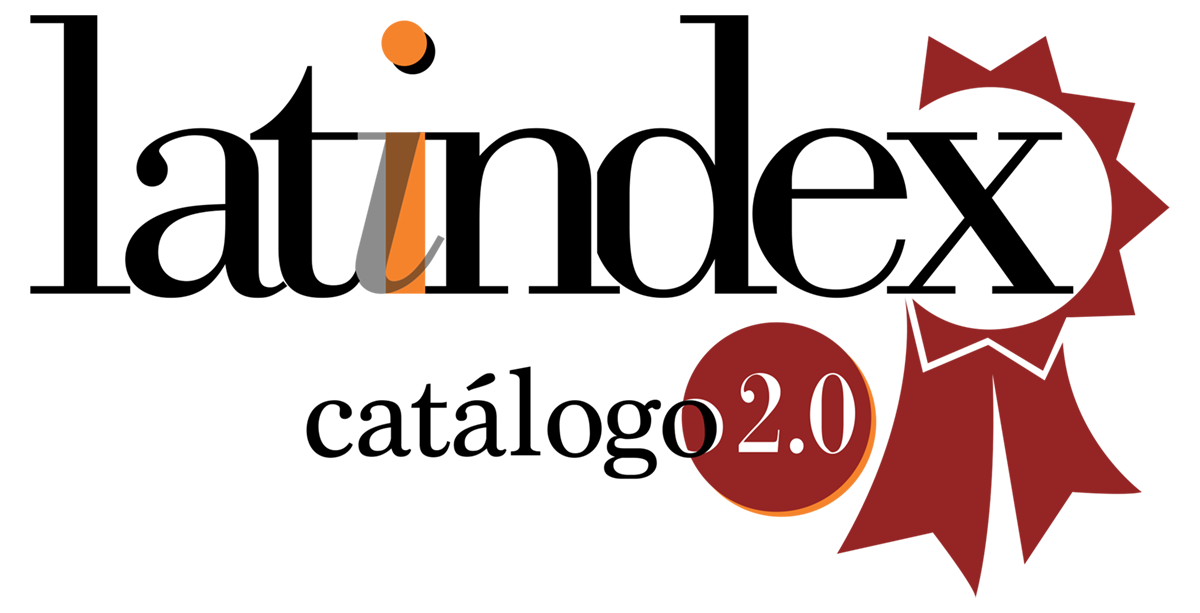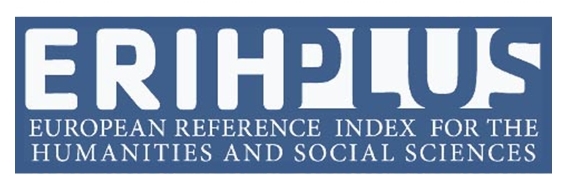Masculinities and Femininities in Metal Music
DOI:
https://doi.org/10.24215/24690333e035Keywords:
metal music, authenticity, masculinity, femininityAbstract
This article develops a part of research results about bonaerense metal music scene since 2013 to 2017. This work focus on issue of gender and sexuality perspectives. This scene has a prevalent social identity that it is constructed through metal authenticity´s paradigm. It evaluates the truthfulness of musicians, fans and its practices with patriarchal parameters. Thus, scenic agents produce its alternative male and female identities with dialogues and tensions faced with heteronormativity.
Downloads
References
Adamo, N. y Tellis, P. N. (2017). Gritar o morir. En torno a la voz de las mujeres en el metal. En G. Minore (Comp.), Cultura metálica 4: ponencias, debates y exposiciones de la 4º Feria del Libro Heavy de Buenos Aires (pp. 55-60). Ciudad Autónoma de Buenos Aires, Argentina: Clara Beter Ediciones.
Adamo, N. (2018). Mujeres metálicas. Reflexiones en torno a la mujer en el heavy metal argentino. En E. Scaricaciottoli (Comp.), Parricidas: mapa rabioso del metal argentino contemporáneo (pp. 47-77). Ciudad Autónoma de Buenos Aires, Argentina: La Parte Maldita.
Alabarces, P. (1995). Entre gatos y violadores. El rock nacional en la cultura argentina. Ciudad Autónoma de Buenos Aires, Argentina: Colihue.
Alabarces, P. (2006). Fútbol, violencia y política en la Argentina: ética, estética y retórica del aguante. Esporte e Sociedade, (2), 1-14. Recuperado de https://www.ankulegi.org/wpcontent/uploads/2012/03/0102Alabarces.pdf
Arenillas Meléndez, S. (2016). Retromanía, artificio y transgresión del glam en la música popular española del siglo XXI. Cuadernos de música Iberoamericana, (29), 163-183. Recuperado de https://doi.org/10.5209/CMIB.56551
Bourdieu, P. (2000). La dominación masculina. Barcelona, España: Anagrama.
Butler, J. (2007) [1990]. El género en disputa. El feminismo y la subversión de la identidad. Barcelona, España: Paidós.
Castillo Bernal, S. (2007). El cuerpo humano como instrumento subcultural. De los inicios del heavy metal al simbolismo ritual del black metal. Fuentes humanísticas, 19(34), 43-57. Recuperado de http://fuenteshumanisticas.azc.uam.mx/index.php/rfh/article/view/306
Clifford-Napoleone, A. (2015). Querness in heavy metal music: metal bent [Lo queer en el heavy metal: metal torcido]. New York, United States: Routledge.
Dawes, L. (2013). What Are You Doing Here? [¿Qué estás haciendo aquí?]. New York, United States: Bazillion Points.
Del Fresno, M. (2011). Netnografía. Investigación, análisis e intervención social online. Barcelona, España: UOC.
Flores, M. (1993). La música popular en el Gran Buenos Aires. Ciudad Autónoma de Buenos Aires, Argentina: Centro Editor de América Latina.
Fischerman, D. (2004). Efecto Beethoven. Complejidad y valor en la música de tradición popular. Ciudad Autónoma de Buenos Aires, Argentina: Paidós.
Frith, S. y McRobbie, A. (1978). Rock and Sexuality. Screen Education, (29), 3-19.
Green, L. (2001). Música, género y educación. Madrid, España: Morata.
Gruzelier, J. (2007). Moshpit Menace and Masculine Mayhem. En F. Jarman-Ivens (Ed.), Oh Boy! Masculinities and Popular Music (pp. 59-75). New York, United States: Routledge.
Hill, R. L. (2013). Representations and Experiences of Women Hard Rock and Metal Fans in the Imaginary Community (Tesis de Doctorado). Universidad de York, Reino Unido. Recuperado de https://pdfs.semanticscholar.org/70a9/26e329adcbeb180f37dff64e6fb27edb2633.pdf
Janotti Jr., J. (2004). Heavy Metal com Dendê. Rock pesado e mídia em tempos de globalização [Heavy metal con Dendê. Rock pesado y medios en tiempos de globalización]. Rio de Janeiro, Brasil: E-Papers editora.
Janotti Jr., J. (2013). Rock with the devil: Notas sobre géneros e cenas musicais a partir da performatização do feminino no heavy metal. E S. Pereira de Sá y J. Janotti Jr. (Orgs.), Cenas musicais (pp. 73-89). Guararema, Brasil: Livraria Da Ana.
Justo von Lurzer, C. y Spataro, C. (2016). Cincuenta sombras de la cultura masiva. Desafíos para la crítica cultural feminista. Nueva Sociedad, (265), 117-131. Recuperado de https://www.nuso.org/media/articles/downloads/7._TC_Justo_265.pdf
Kahn-Harris, K. (2007). Extreme Metal. Music and Culture on the Edge [Metal extremo. Música y cultura en el borde]. Oxford, England: Berg.
Krenske, L. y McKay, J. (2000). «Hard and Heavy»: Gender and Power in a Heavy Metal Music Subculture. Gender, Place and Culture: A Journal of Femiist Geography, 7(3), 287-304.
Kimmel, M. S. (1997). Homofobia, temor, vergüenza y silencio en la identidad masculina. En T. Valdés y J. Olavarría (Eds.), Masculinidad/es. Poder y crisis (pp. 49-62). Santiago de Chile, Chile: Isis Internacional, FLACSO Chile.
Manzano, V. (2011). Tiempos de contestación: cultura del rock, masculinidad y política, 1966-1975. En S. Elizalde (Coord.), Jóvenes en cuestión. Configuraciones de género y sexualidad en la cultura (pp. 23-57). Ciudad Autónoma de Buenos Aires, Argentina: Biblos.
Martínez García, S. (1997). Músicas «populares» y musicología: aportaciones al estudio del heavy metal. Cuadernos de música Iberoamerica, (4), 241-257.
Martínez García, S. (2003). Decibelios y testosterona: una aproximación a las imágenes de género en el rock y el heavy metal. Dossiers feministes, 101-117.
Minore, G. (2016). La figura de la mujer en el heavy metal argentino. En G. Minore (Comp.), Cultura metálica 3. Ponencias, debates y exposiciones de la 3° Feria del Libro Heavy de Buenos Aires (pp. 53-61). Ciudad Autónoma de Buenos Aires, Argentina: Clara Beter Ediciones.
Pisano, J. I. (2017). Heavy metal nacional: cómo matar al padre. Código y frontera, (s/d). Recuperado de http://www.codigoyfrontera.space/2017/10/06/heavy-metal-nacionalcomo-matar-al-padre/
Plesch, M. (2013). Demonizing and Redeeming the Gaucho: Social Conflict, Xenophobia and the Invention of Argentine National Music. Patterns of Prejudice, 47(4-5), 337-358. Recuperado de https://doi.org/10.1080/0031322X.2013.845425
Rappaport, J. (1984). Studies in Empowerment. Introduction to the Issue. Prevention in human services, 3(2-3), 1-7.
Riches, G., Lashua, B. y Spraklen, K. (2014). Female, Mosher, Transgressor: A «Moshography» of Transgressive Practices within the Leeds Extreme Metal Scene. IASPM Journal, 4(1), 87-100. Recuperado de https://iaspmjournal.net/index.php/IASPM_Journal/article/view/652
Scaricaciottoli, E. (2017). Vivir sin los padres, dilema del metal criollo. Andén, (87). Recuperado de http://andendigital.com.ar/2017/03/vivir-sin-los-padres-dilema-delmetal-criollo-anden-87/
Simonetto, P. (2016). La moral institucionalizada. Reflexiones sobre el Estado, las sexualidades y la violencia en la Argentina del siglo XX. e-l@tina, 14(55), 1-22. Recuperado de https://publicaciones.sociales.uba.ar/index.php/elatina/article/view/1774
Vila, P. (1985). Rock Nacional. Crónicas de la resistencia juvenil. En E. Jelin (Comp.), Los nuevos movimientos sociales (pp. 8-12). Ciudad Autónoma de Buenos Aires, Argentina: Centro Editor de América Latina.
Wallach, J. y Levine, A. (2013). I Want You to Support Local Metal. A Theory of Metal Scene Formation. En T. Hjelm, K. Kahn-Harris y M. LeVine (Eds.), Heavy Metal. Controversies and countercultures (pp. 117-135). Sheffield, United Kingdom: Equinox.
Walser, R. (2014) [1993]. Running with the Devil: Power, Gender, and Madness in Heavy Metal Music [Corriendo con el demonio: poder, género y locura en el heavy metal]. Middletown, United States: Wesleyan University Press.
Weinstein, D. (2000) [1991]. Heavy metal. The Music and Its Culture [Heavy metal. La música y su cultura]. Boston, United States: Da Capo Press.
Willis, P. E. (2014). Profane Culture [Cultura profana]. Reino Unido: Princeton University Press, 1978.
Additional Files
Published
How to Cite
Issue
Section
License
Copyright (c) 2020 Manuela Belén Calvo

This work is licensed under a Creative Commons Attribution-NonCommercial-ShareAlike 4.0 International License.
Current policy since 2019
The acceptance of an original by the journal implies the non-exclusive transfer of the patrimonial rights of the authors in favor of the publisher, who allows the reuse, after its edition (postprint), under a Creative Commons License Attribution-NonCommercial-ShareAlike 4.0 International.
According to these terms, the material can be shared (copy and redistribute in any medium or format) and adapted (remix, transform and create another work from the material), provided that a) the authorship and the original source of their publication (magazine and URL of the work) are cited, b) is not used for commercial purposes and c) the same terms of the license are maintained.
The assignment of non-exclusive rights implies that after postprint in Con X authors may publish their work in any language, media and format; in that case, it is requested that they signal that the material was originally published by this journal.
Assignment also entails the authors’ authorization for the work to be collected by SEDICI, the institutional repository of the Universidad Nacional de La Plata, and for it to be indexed in the databases that the publisher thinks appropriate for enhancing the visibility of the published work and its authors.
In addition, the journal encourages authors to submit their works to other institutional and thematic repositories after their publication in Con X, under the assumption that offering society unrestricted access to scientific and academic production contributes to a greater exchange in global knowledge.








.jpg)

.png)



.png)





















